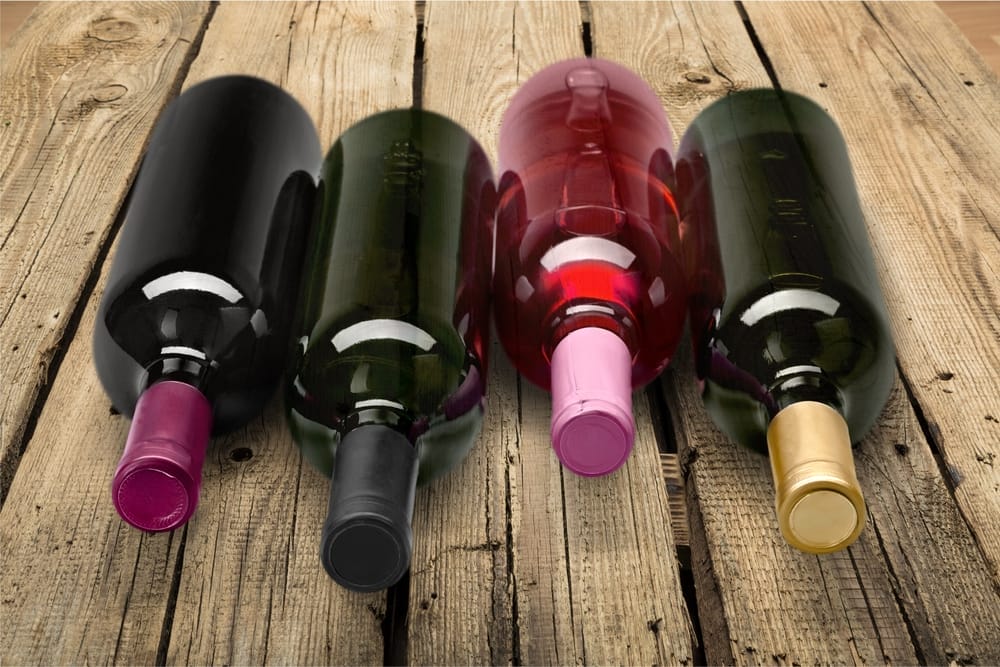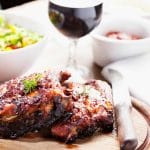Are you trying to decide on a wine for your next dinner outing?
This article will elucidate the wonders of sweet wine by exploring Riesling vs Moscato!
As indicated by a 2023 market research report here, sweet wine is expected to grow in popularity steadily, especially in the US market.
Another consumer study by E&J Gallo winery found that sweet wines lead 1 in 3 people into the wonderful world of wine compared to other types.
Sweet wines are very popular, yet commonly misunderstood at the same time!
Some may even preconceive that the sugary taste of sweet wines leaves little room for flavor complexity. A closer exploration of Riesling and Moscato reveals the rich diversity that’s present. This article will cover:
- Riesling and Moscato origins
- Wine regions producing riesling and Moscato
- The taste and characteristics of Riesling and Moscato
- The range of styles of Riesling and Moscato
- Alcohol content comparison
- Price point comparison
- The aging potential and investment opportunity for both wines
- Food pairings to match.
Let’s get started!
Origins of Riesling and Moscato

In this section, we’ll begin by delving into the history and origins of Riesling sweet wine.
Riesling
Riesling is an iconic type of wine grape known across the globe, but its origins are in Germany in the Rhine River region.
Written references to this variety date all the way back to 1435, when a man named Count Katzenelnbogen recorded a purchase of six riesling grape crops into his cellar log. The spelling was ‘Riesslingen’ at the time.
Monks and nobles originally tended the crops of early Riesling grapes. What really popularized riesling was the replanting of many vineyards after the Thirty Years War.
Originally, Riesling was established in French vineyards and the trend followed through to German wine regions as well.
The grape adapted well to varying climates, making it more lucrative to grow across diverse regions and giving a wide range of flavors depending on the climate and location.
Moscato
Now, let’s look at the competitor! So, what is the background of Moscato?
Moscato is thought to date back centuries to the early Mediterranean, Greek, or even Egyptian grape trade. The Muscat grape family produces Moscato wines, and these are commonly grown in Italy.
You’ll find that Moskhos is the Greek word for musk. This could suggest the wine’s early origins and acknowledgment of its sweet, aromatic character.
It wasn’t till the 16th century when winemakers Giovan Battista Croce and Carlo Emanuele L’s Jeweler laid out instructions for the production of Moscato wine.
Fine Moscatos still come from Italy where the climate allows winemakers to perfect the sweetness and musk of this variety.
Wine Regions Producing Riesling and Moscato

Rieslings are made in a variety of locations including Germany, The United States, France, and Austria.
Riesling production is centralized around Germany, where its heritage is also found.
The Mosel and Pfalz regions are two of the most notable for producing fine German Rieslings. The stony soils in these regions retain heat, producing sweet grapes.
As for global Rieslings, Alsace, France, and Wachau, Austria (or other locations in France and Austria) are renowned for their exports.
A little closer to the West is Washington state in the USA, which produces high-quality rieslings comparable in quality to the European varieties.
Some of the best Moscato regions include Italy, Australia, The United States, and Spain. As for the best overall wine region, that would be Italy’s Piedmont region! This was one of the original cultivating regions for its optimal soil conditions.
Spain is well known for producing a Moscato that sparkles, and some of the best regions to obtain this ‘Moscat’ are Malaga and Catalonia.
If you continue to look across the globe, Australia actually produces some of the most well-regarded Moscato as well!
This is because the warm zones of South Australia suit the more ‘fussy’ Moscato variety that prefers a consistently warm climate.
As for western Moscatos, California in the USA provides the warmth that Muscat variety thrives from, so this is another good region to consider when selecting your Moscato.
Taste and Characteristics Comparison
Being aware of the pleasures specific to Moscato vs Riesling will help you appreciate your purchase and enhance the occasion in general.
The taste and complexity will no doubt contribute to food pairings, as well as to the preferences of yourself and your guests. I will compare and contrast each:
Flavor Profile of Riesling
Riesling has summer, fruity flavor elements such as pears, peaches, nectarines, and apricots.
Citrus is another fruit type apparent in younger Rieslings; for instance, lemon and lime.
When you smell the Risling, you may catch notes of this lime or a sweeter honeycomb scent for the sweeter Rieslings.
Dryer Rieslings will include the sharper, tarter aromas of citrus whereas sweeter aged aromas include floral scents like Jasmine. However, the sweet fruits and flowers in Riesling don’t undercut its complexity.
Peaty minerals can be tasted from German-soil rieslings in particular, leading to more complexity in the flavor. Riesling falls on the acidic end of the spectrum.
This can make it taste more refreshing! It has a light body as well, which does not overwhelm the palate.
Moscato’s Unique Flavor
Moscato also has a sweet taste like Riesling; however, the floral elements take center stage. The lower alcohol content allows delicate elderflower and orange blossom to be noticed on the palate.
As with Rieslings, summer fruits like peaches and nectarines come to mind, along with citrus. This can all be picked up in the aroma of the wine!
A gentler acidity in Moscato makes it a refreshing and light choice compared to the slightly fuller, dryer Riesling.
Moscato can be picked apart from Riesling with ease if you pay attention to how heavy they feel on the palate, and which is more acidic; the gentler and more floral is likely to be Moscato!
Variations in Wine Styles

Riesling styles vary in dryness to sweetness, and are often classed under the traditional German “Types” below:
- Halbtrocken (half-dry)
- Lieblich (off-dry)
- Feinherb/ Spatlese (semisweet)
- Sub/ Auslese (sweet)
The sweetest is Trockenbeerenauslese.
Moscato styles vary in sweetness and the sparkling characteristic:
- The sparkling varieties are:
- Moscato D-Asti (semi-sparking)
- Asti Supumante (sparkles)
The still varieties known as Muscat comes in pink, red, or blanc (white) Moscato.
Alcohol Content in Riesling vs Moscato
Alcohol content often depends more on the variety of Riesling or Moscato that you select.
Rieslings nonetheless tend towards higher alcohol contents of 8% to 13% ABV.
Moscatos tend to fall between 5% and 9% ABV. Alcohol content is important in the style of wine being produced; the lower content in moscato contributes to a much sweeter taste.
Price Points: Riesling vs Moscato
Riesling and Moscato are both affordable wines, with low and medium-range bottles falling between 11 and 25 dollars.
Although you may come across cheap Rieslings too, Moscato is known for its affordability as low as $25 from a reputable winemaker.
Both wines will exceed $25 as you explore the sweet wines that are aged or produced in boutique vineyards.
Aging Potential and Investment Worthiness
Riesling can bear complex flavors when aged patiently for about 10 years. Aging riesling evolves the waxy, oily tastes.
That’s not the case with Moscato! Moscato is normally intended to be enjoyed while it is young and light-bodied, so it is not typical to invest in Moscato and age it. Stick to Riesling if you are making sweet wine investments to age.
Food Pairing Recommendations:
Both Riesling and Moscato make ideal pairings with rich, fatty, or salty foods. Their lightness and sweetness provide a refreshing pairing.
Moscato also suits desserts because its low alcohol content will not overshadow the sweet treat that it is paired with.
Riesling Food Pairings
- Spicy Thai or Indian cuisine. Riesling will clear the palate in between bites
- Pork dishes, especially with fruity glazes. The sweet wine matches the sweet glaze!
- Seafood – particularly sushi. When both the wine and meal are fresh, the result is a perfect summer dish
- Rich, creamy dishes like Alfredo pasta. The creaminess gets balanced by the wine
- Soft and semi-soft cheeses with charcuterie.
Moscato Food Pairings:
- Fresh fruit and fruit salads with Moscato makes an excellent after-dinner refreshment
- Light desserts like fruit tarts match the lightness of the wine
- Spicy cuisine, such as Thai or Mexican
- Mild cheeses, like Brie or Camembert
- Light seafood dishes.
Moscato is also often enjoyed alone, as a sipping wine.
Final Words
When it comes to Riesling vs Moscato, you need to try both!
Sweet wines can offer just as much enjoyment as their dryer counterparts, and this can’t always be appreciated from afar.
Whether you prefer the heavier, fruitier Riesling or the bubbly Moscato is all up to enjoying both on occasion.
I would recommend starting with a food pairing from my list above and taking the time to appreciate how complex both sweet wines can actually taste.
FAQs
The muscat grape which is high in sugar content is used to make Moscato wines, so these are typically sweeter. Rieslings vary widely in sweetness depending on the style.
Both Riesling and Moscato can be enjoyed year-round. They are versatile wines and widely available.
However, Moscatos are often associated with summer as a refreshment in the heat. Rieslings are also refreshing, but a bit fuller-bodied and can make a delicious dessert in the fall.
- White Wine Storage Temperature: Key to Perfect Preservation - December 19, 2023
- Syrah vs Zinfandel: Difference Between Two Red Titans - November 24, 2023
- Riesling and Moscato Face-Off: Comparing Sweet Wines - November 22, 2023










